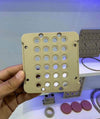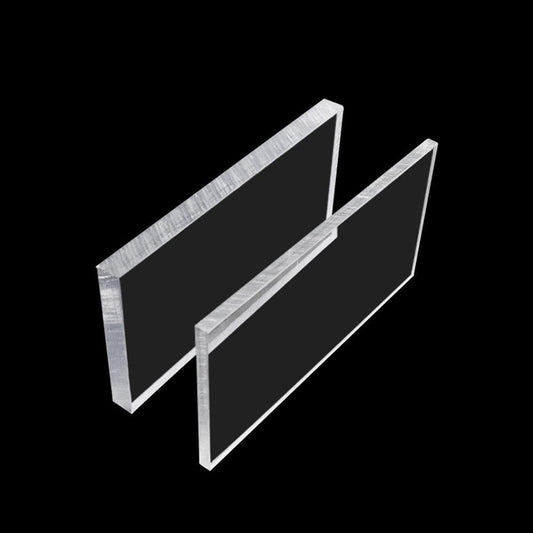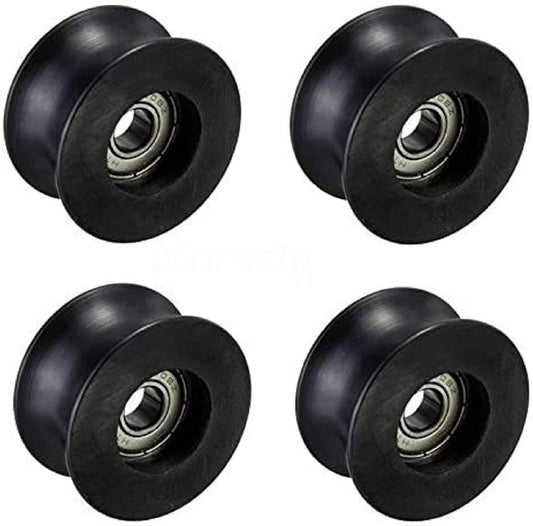In the realm of plastic fabrication, ABS plastic bending stands out as a pivotal technique. With its unique blend of strength, flexibility, and aesthetics, ABS plastic has become a favorite material among industries. This article delves deep into understanding the intricacies of bending ABS plastic, highlighting its significance and the unique properties that make it a prime candidate for bending processes.

Understanding ABS Plastic
The Unique Nature of ABS Plastic Sheets
ABS, or acrylonitrile butadiene styrene, is a thermoplastic polymer known for its robustness and versatility. The unique properties of ABS plastic sheets include high impact resistance, excellent heat stability, and ease of fabrication. These properties not only make ABS a preferred choice for various applications but also make it ideal for ABS plastic bending processes.
ABS plastic contains rubber particles embedded in a rigid plastic matrix. This gives it both strength and flexibility, allowing it to withstand bumps and drops without cracking or shattering. At the same time, it can be reheated and reshaped as needed. ABS also has a high resistance to abrasion and corrosion, making it suitable for mechanical parts that undergo wear and tear.
Compared to materials like wood, glass, or metal, ABS plastic sheets are lightweight yet durable. They are easy to cut, drill, and fabricate using simple tools. This enables rapid prototyping and simplifies mass production. The relative low cost of ABS combined with its useful properties make it a versatile and economical choice for designers and engineers.

Differentiating ABS from Other Plastics
While there are numerous plastics available, ABS stands out due to its balanced combination of mechanical toughness and ease of workability. Unlike other plastics, ABS combines the strength of acrylonitrile, the toughness of butadiene, and the ease of processing of styrene, making it a unique and versatile material.
Acrylonitrile provides chemical resistance and thermal stability. Butadiene grants impact resistance and strength. Styrene gives the plastic its rigid structure and glossy appearance. The proportions can be tweaked to optimize for a particular application. This customizability makes ABS a Swiss army knife in the world of plastics.
In comparison, plastics like PVC and polyethylene are softer and more malleable. They lack the ruggedness of ABS. On the other hand, nylons and acetals are more difficult to fabricate and machine. Finding the right material involves balancing strength, ease of use, appearance, and cost. This is where ABS shines.

The Process of Bending ABS Plastic
Delving into the Bending Process
The introduction to ABS plastic bending processes begins with understanding the material's behavior under heat. When heated to a specific temperature range, ABS becomes pliable and rubbery, allowing it to be precisely bent into shape. This process, while seemingly straightforward, requires a keen understanding of temperature thresholds, bending angles, and cooling techniques.
ABS plastic line bending involves heating a straight sheet to its glass transition temperature of approximately 200-220°F. At this point, it can be bent around a metal mandrel or other form. The radius of the bend will depend on the thickness of the plastic. Thinner sheets can be wrapped into tighter curves.
Maintaining uniform temperature across the material is crucial to prevent warping or cracking. Uneven stresses will manifest as ripples or bends in unintended areas. The plastic must also cool gradually and evenly once removed from the heat source. Drastic drops in temperature can cause internal stresses that distort the final shape.

ABS plastic freeform bending allows for more organic, sculptural forms. Here, the heated plastic is draped over shaped molds and allowed to cool into free-flowing curves. The technique requires a greater degree of skill but permits greater creativity.
Regardless of the technique, understanding the thermal properties of ABS is the key to success. With experimentation and practice, intricate and reliable bends can be achieved.
Tools and Equipment for Bending
Achieving the perfect bend requires specialized tools. From heating elements to bending jigs, the equipment plays a crucial role in ensuring clean and accurate bends. Investing in quality tools not only ensures precision but also enhances the longevity of the bent product.
ABS plastic bending operations require an oven or heat gun capable of reaching approximately 380-400°F. Uniform heating over a broad area helps prevent hot spots. The plastic sheet should be straddled between insulation blocks within the oven to hold it flat during initial heating.
For ABS plastic line bending, a jig consisting of metal mandrels of various diameters provides forms to bend the heated plastic around. Polished surfaces prevent marring or sticking. The mandrel diameters determine the minimum bend radius for a given thickness. Larger diameters are needed for thicker sheets.
Clamps, presses, and restraints allow the plastic to be held at precise angles as it cools. This prevents warping and helps maintain the desired shape. Fans or chilling bars speed up cooling so the parts can be removed faster.
Sanders, buffers, and heat guns allow final adjustments to the bent ABS plastic to achieve perfectly smooth finishes. A little post-shaping can eliminate any slight imperfections.
Overall, investing in high-quality tools and taking the time to understand their use is key to achieving flawless bends in ABS plastic. It transforms the art from a trial-and-error process to a science.

Significance of Bending ABS Plastic
Bending in Various Industries
From automotive components to consumer electronics, the significance of ABS plastic bending is evident across sectors. Its ability to retain strength after bending makes it ideal for applications requiring both aesthetics and durability. Industries value ABS for its consistency, ensuring each bend maintains uniformity regardless of production batch.
In automotive interiors, gently bent ABS plastic panels retain their shape to provide pleasing yet tough surfaces. ABS plastic line bending creates sleek air vent bezels and door handles. In consumer appliances, the same process yields curved control panels and internal structural parts like shelves and racks.
The use of ABS plastic freeform bending creates the smoothly contoured casings for electronics like printers, speakers, and monitors. The graceful aesthetic conceals the device's internal workings while providing a robust exterior shell.
ABS' non-conductive and chemically resistant properties also make it suitable for laboratory equipment like pipettes, vials, and hoods featuring both straight and curved sections. Across these diverse domains, ABS plastic bending delivers the ideal balance of form and function.
Benefits of Bent ABS Plastic
Beyond its aesthetic appeal, bent ABS plastic offers functional advantages. Its ability to form complex shapes without compromising strength makes it a preferred choice for designers and engineers alike.
The flowing shapes possible with ABS plastic bending permit improved ergonomics and allow products to fit comfortably in the hand. The organic forms convey a sense of sophistication. curseved surfaces also increase rigidity, preventing creaking or buckling under pressure.
Bent ABS enclosures provide excellent impact absorption for sensitive electronics. The curved sheets naturally dissipate and dampen destructive vibrations and shocks. ABS is also easily machined after bending, permitting precise cutouts for buttons, ports, and bezels. This simplifies product assembly.
For designers, the ability to turn 2D sketches into 3D forms in ABS plastic unlocks new possibilities. Combined with its durability and consistency, it explains why industries ranging from household products to aerospace rely on ABS plastic bending.

Challenges in ABS Plastic Bending
While invaluable, every fabrication process also comes with challenges. ABS plastic bending is no exception. Variables including material thickness, equipment limitations, and environmental conditions can lead to imperfect bends if not properly addressed.
ABS plastic sheets thicker than 6mm can require extremely high temperatures to become workable, risking damage or burning. Thinner 1-2mm sheets are prone to warping at high heat. Finding the ideal temperature range can involve trial-and-error.
Insufficient clamping or non-uniform cooling introduces stresses that manifest as ripples or deformations. ABS plastic line bending jigs with worn mandrels can leave marks on the plastic. Ambient humidity can also impact the cooling process.
ABS plastic bending around tight radii risks crimping on the inner surface. Techniques like using hot vapors to heat the plastic require extensive skill. Issues like these illustrate why bending ABS plastic is as much art as it is science.
Overcoming Bending Challenges
Thankfully, being aware of potential ABS plastic bending challenges is the first step toward preventing them. Steps like maintaining tight process controls, investing in high-quality tools, and working in stable environmental conditions go a long way.
Ensuring uniform heating and cooling is one of the most critical factors for success. This relies on using properly calibrated ovens and exercising caution when removing hot plastic from the heat source. Insulated tools help prevent drastic temperature drops.
Clean, polished mandrels and mold surfaces prevent marring or sticking while bending. Allowing adequate cooling time before further handling prevents warping. Minor post-shaping corrections can also help achieve perfectly smooth final results.
While ABS plastic bending requires care and precision, the obstacles can be overcome with knowledge and experience. The remarkable benefits make it worthwhile to master this versatile fabrication technique.

Techniques for Perfect Bends
Exploring Bending Techniques
The world of ABS plastic bending is vast, with multiple techniques catering to different applications. From line bending to freeform bending, each method offers unique advantages. Choosing the technique depends on the desired product shape, production volume, and performance needs.
ABS plastic line bending works well for high-volume production of identical parts requiring straightforward 90-degree bends. The male/female mandrel system ensures consistency. It is suitable for electronic enclosures, body panels, racking systems, ductwork, and other regularly shaped items.
Freeform bending enables short-run manufacturing of custom, organic shapes. The plastic is draped over a female mold and hardened, creating sculptural forms. This supports low-volume production for specialty items like scientific ware and avant-garde furniture.
Other niche methods like three-roll bending use a pyramidal set of rollers to make precise bends along the length of a plastic sheet. This incremental technique can create everything from gentle curves to triangular cross-sections.
Understanding the capabilities and limitations of each technique is key to selecting the optimal ABS plastic bending method for a given product. Consulting fabrication experts helps ensure the best process is chosen.
Best Practices for Bending
Achieving flawless bends requires more than just the proper technique - factors like material thickness, bend radius, and temperature control also come into play. Following best practices ensures both aesthetic and functional perfection.
Adhering to recommended inside bend radii relative to material thickness prevents unsightly crimping on the inner surface. Allowing some extra length or width compensates for elongation of the outer surface on tight bends.
Heating 10-20% past the glass transition temperature provides a margin of safety to ensure uniform pliability when bending. A soft flame should be used rather than a concentrated point when heating by hand.
Restraining jigs that apply clamping pressure incrementally prevent stress build-up. Allowing the bent ABS plastic to cool fully before releasing prevents warping. Periodic mandrel and mold polishing maintains smooth finishing.
Avoiding drastic temperature changes, controlling humidity levels, and keeping dust or debris away from hot plastic ensures quality. With experience and adherence to protocols, even complex ABS plastic bends can be executed flawlessly.

Conclusion
In the ever-evolving world of plastic fabrication, ABS plastic bending emerges as a technique of paramount importance. The unique properties of ABS plastic make it an ideal candidate for both simple and complex bending applications. Correctly executed, bent ABS provides an unparalleled combination of strength, durability, and aesthetic sophistication.
As we delve deeper into the intricacies of ABS and the various bending processes, it becomes apparent that mastering this art can lead to unlimited industrial design possibilities. Driven by growing demand across sectors, innovation in ABS plastic bending will continue to yield exciting new products that blend form with function. By leveraging the techniques and best practices covered here, both novice and experienced fabricators can begin exploring the robust potential of ABS plastic bending.







